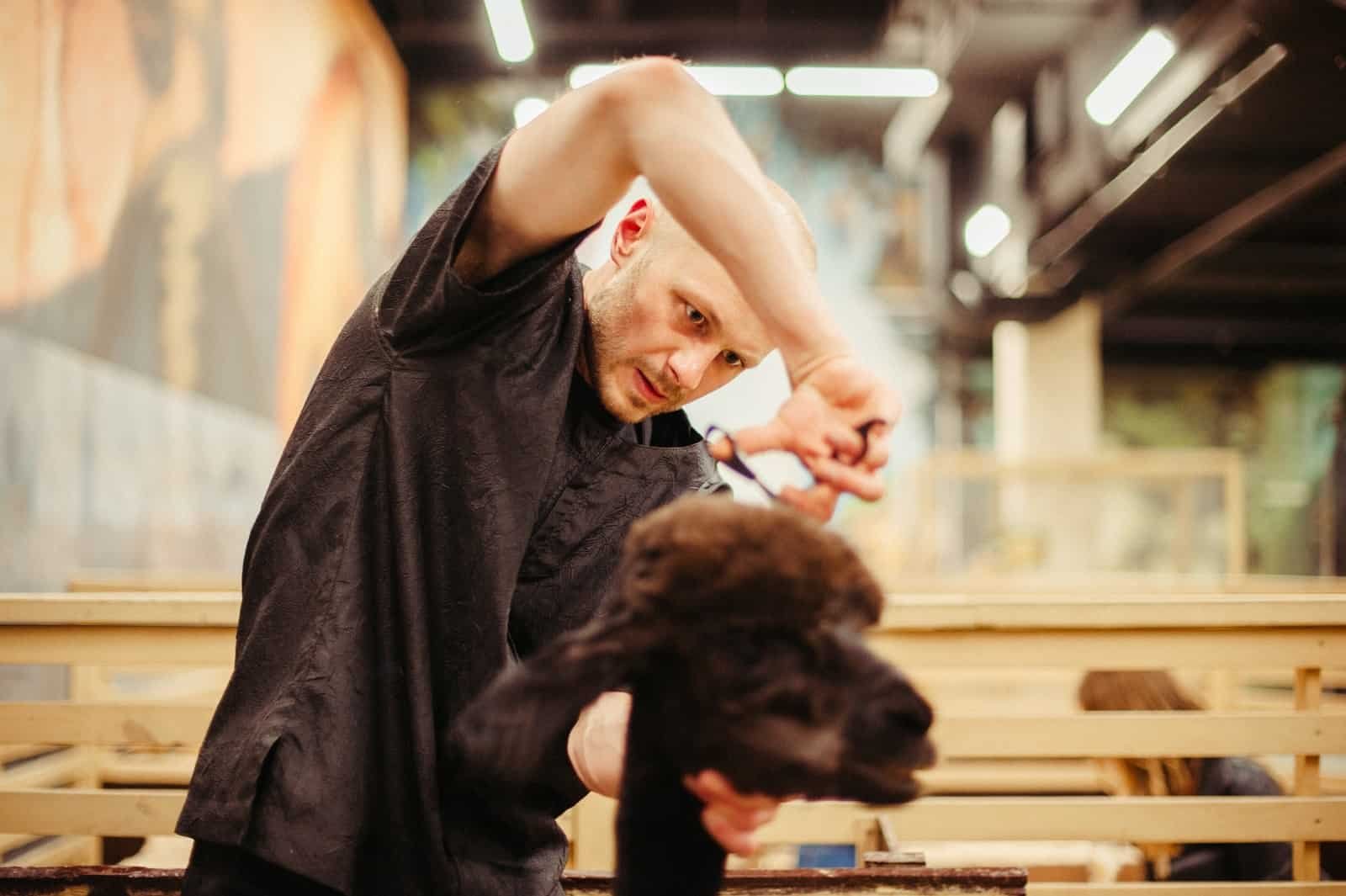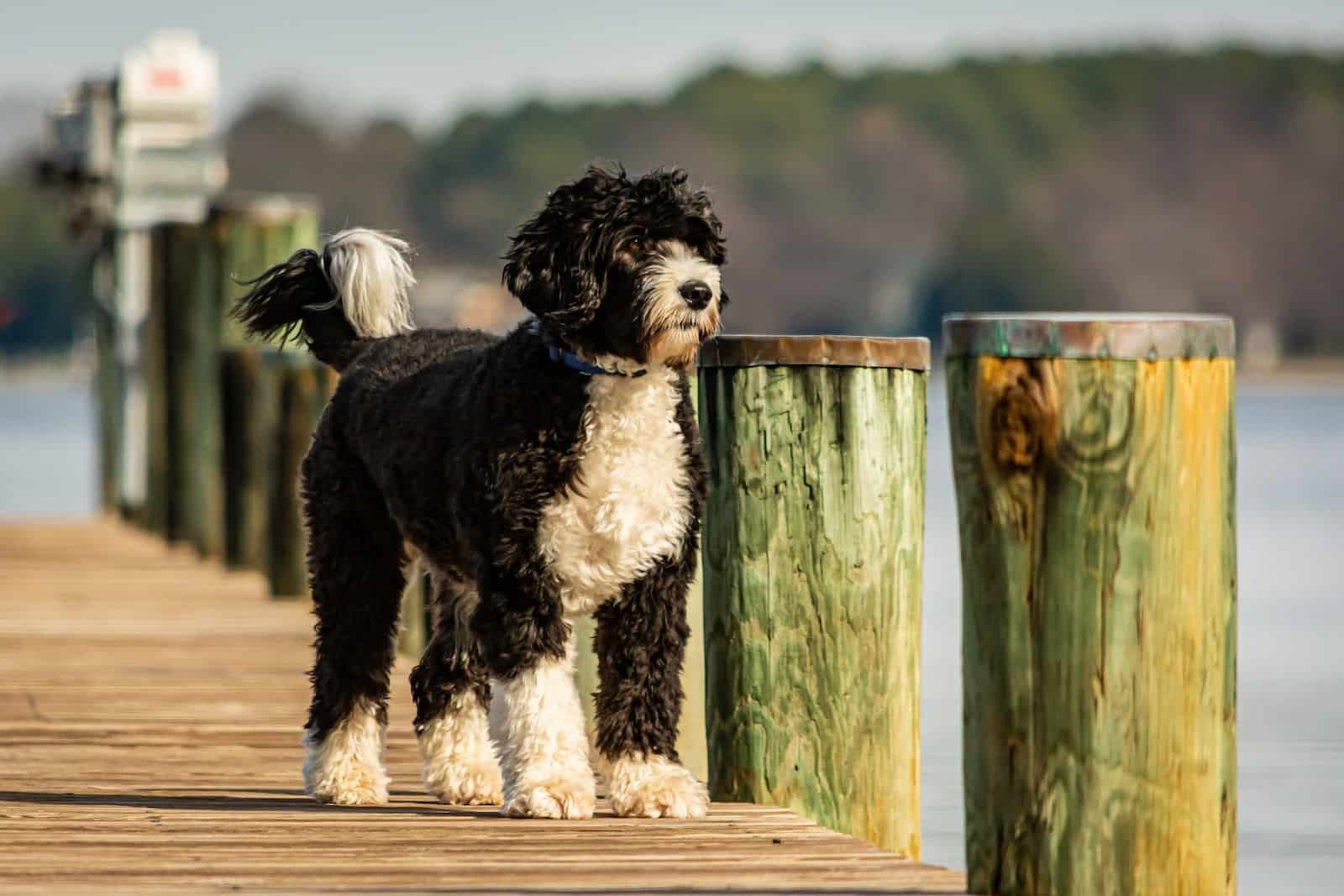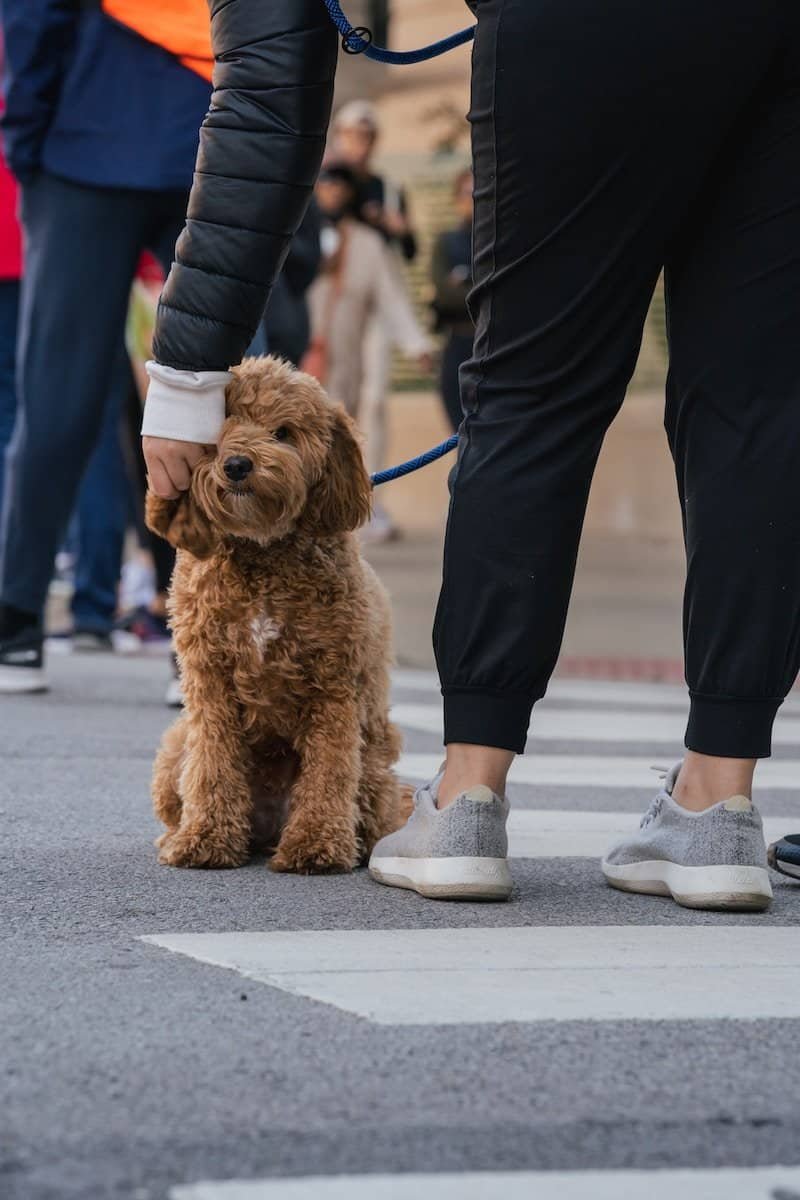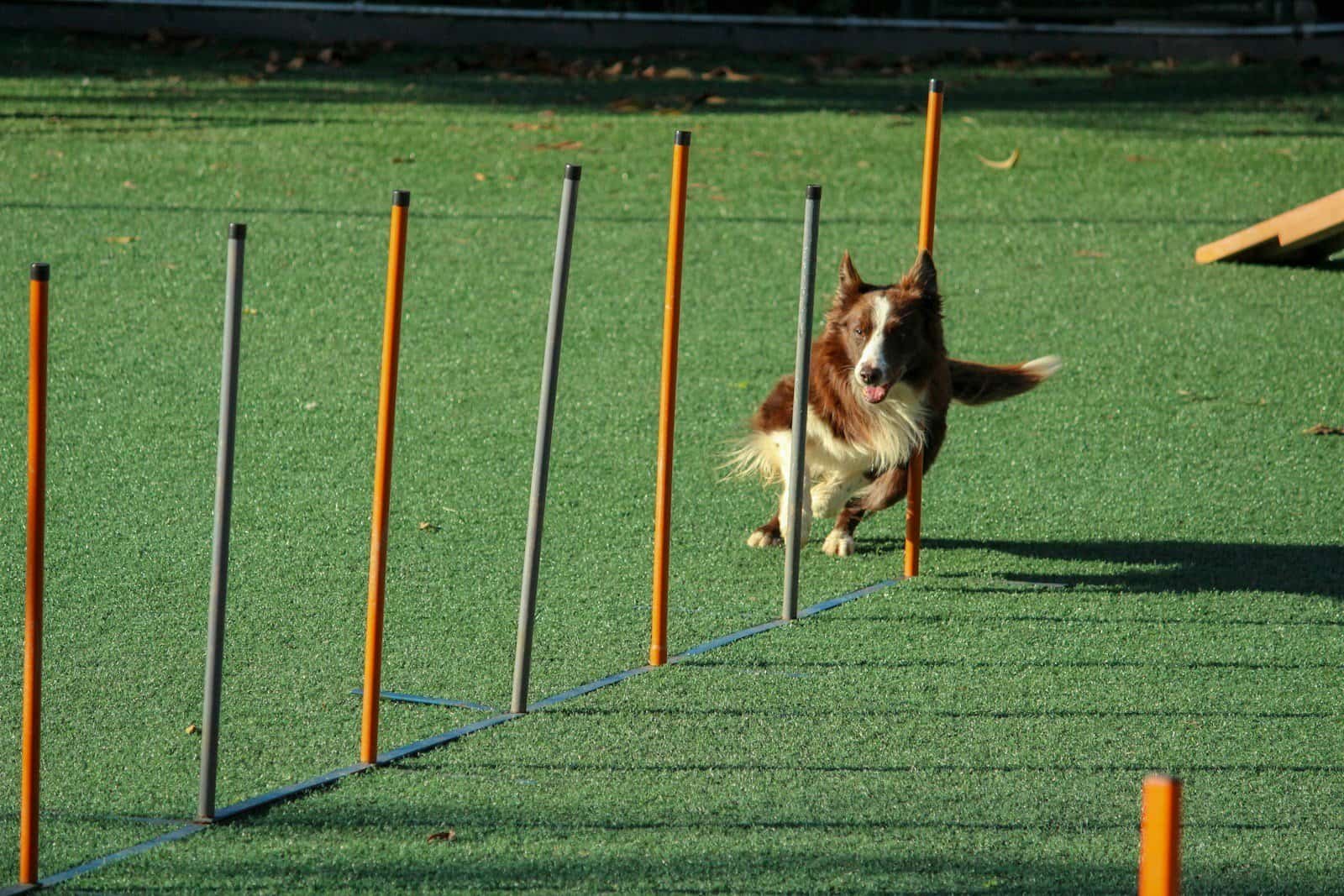
Best Dog Breeds for Training
Some dog breeds just stand out for learning commands and picking up routines. Intelligence, eagerness to please, and focus really set certain breeds apart when it comes to training.
Choosing the Right Breed
Picking the right breed for training depends on energy, learning speed, and personality. Border Collies and German Shepherds are famously easy to train.
Other breeds like Golden Retrievers, Poodles, and Labradors also catch on fast and follow directions well. If you’re looking for a dog to train, check out breeds with a history in obedience, assistance, or working jobs.
These dogs usually pay close attention and want to work with you. Breeds originally bred for herding or protecting often focus better during lessons, so positive reinforcement works wonders.
Stick to a regular schedule, use clear instructions, and make sure your dog gets enough exercise. Those simple things really help smart dogs shine. If you’re not sure where to start, it’s worth looking up what the breed was bred to do—sometimes that explains a lot.
Border Collie Attributes
Border Collies have a reputation as the most trainable dogs out there. People bred them for herding livestock, so they had to make quick decisions and listen to spoken or whistle commands.
These dogs have a serious work ethic and sharp minds. Owners notice that Border Collies pick up new tricks fast and crave mental challenges.
Regular training like agility or obedience keeps boredom away, but if you skip it, they can get restless or even destructive. With their alert personalities and endless energy, Border Collies really need daily exercise and something to think about.
Trainers love Border Collies, and they’re usually top dogs in obedience and agility competitions. Their knack for understanding words and hand signals makes them a favorite for anyone wanting a responsive, eager companion.
German Shepherd Characteristics
German Shepherds are famous for loyalty and versatility. Police, service, and rescue teams choose them for their focus, courage, and quick learning.
These dogs want to please and really pay attention to their handler. German Shepherds do best with consistent, firm, but positive training methods.
Their protective instincts and brains mean they need early socialization and mental work. Training keeps them healthy and helps prevent unwanted behaviors.
German Shepherds are strong and active, so they need daily exercise, problem-solving games, and clear instructions. They adapt well and love to learn, making them stand out among the most trainable dog breeds.
Understanding Dog Training Principles
Dog training really works when you understand how dogs learn. Methods like operant conditioning and positive reinforcement help shape behavior and build trust.
Operant Conditioning Explained
Operant conditioning means you use rewards or consequences to change behavior. When a dog does something right and gets a treat, praise, or playtime, they’re more likely to do it again.
If a dog gets something they don’t like after a behavior, they’ll try to avoid it. Here’s a quick breakdown:
- Positive reinforcement: Give something good, like a treat, to encourage good actions.
- Negative reinforcement: Take away something unpleasant when the dog does the right thing.
- Punishment: Add or remove something to reduce unwanted actions.
Most trainers stick with positive reinforcement. It’s safer, builds confidence, and really strengthens the bond between you and your dog. If you want more on this, check out this comprehensive guide to dog training.
Training Methods Overview
There’s no single right way to train a dog. Some methods rely on rewards, others use mild corrections, and some mix both.
Common training methods:
- Reward-based training: Uses treats, toys, or praise as motivation.
- Clicker training: Click sound marks good behavior, then you give a reward.
- Balanced training: Mixes rewards with gentle corrections, but still leans on encouragement.
Pick a style that fits your dog’s personality. Reward-based methods usually cut down on fear and boost eagerness to learn. If you’re curious about the basics, here’s a guide for dog training beginners.
Dog Behavior Basics
Understanding dog behavior is key. Dogs talk with body language, sounds, and actions.
If you know what their signals mean, you’ll spot when your dog feels confident, scared, playful, or just annoyed.
Common dog signals:
| Signal | Meaning |
|---|---|
| Wagging tail | Happy or interested |
| Flattened ears | Fear or worry |
| Growling | Warning or discomfort |
| Relaxed posture | Comfort |
Paying attention to these signals helps you keep trust and avoid stress. Training that’s built on respect and understanding just works better. Here’s a good dog training basics article if you want to dig deeper.
Getting Started: How to Train a Dog
Proper dog training starts with planning, a positive relationship, and picking the right rewards. Training feels easier when your dog’s comfortable, motivated, and actually likes the treats you use.
Setting Up Your First Training Sessions
Start training somewhere quiet, like your living room or backyard. Fewer distractions make it easier for your dog to focus.
Keep sessions short—about 5 to 10 minutes—especially for puppies or new learners. Focus on just one skill at a time, like sit or stay.
Gather a leash, treats, and maybe a clicker before you start. Use clear, single-word cues for each behavior and speak in a calm, steady voice.
Repeating training at the same time every day helps set a routine. Dogs love knowing what to expect.
End each session on a positive note, maybe with a successful command or just some well-earned praise. If you want step-by-step help, check out Dog Training 101.
Building Trust and Motivation
Dogs learn best when they feel safe with you. Building trust takes patience and plenty of positive reinforcement.
Reward good behavior with treats, toys, or just affection. Ignore the stuff you don’t want.
Don’t use harsh punishments—they can break trust and slow everything down. Instead, catch your dog doing something right and reward it.
If your dog’s nervous, spend a few minutes playing or cuddling before training. Relaxed dogs always learn better.
Training should feel fun, not like a chore. Make sure you both end on a happy note, even if things didn’t go perfectly.
Strong relationships make dogs want to try again and learn more. When a dog feels comfortable, they’re way more likely to jump in and participate.
Selecting High-Value Treats
Treats are your best tool for training. High-value treats—like cooked chicken, cheese, or tiny pieces of hot dog—usually get the biggest reaction.
Use small, bite-sized pieces so you can give lots of rewards without overfeeding. Save the best treats for tough skills or challenging situations.
For easy stuff, switch to less exciting treats. Some dogs are picky, so notice what gets them excited.
Keep treats handy in a pouch or pocket for quick rewards. Change it up sometimes so your dog doesn’t get bored with the same old snack.
If you want more on using treats, here’s a guide with training basics and tips.
Positive Reinforcement Training Techniques
Positive reinforcement really helps dogs learn new things. This approach uses rewards and praise instead of fear or punishment.
It encourages dogs to think and builds trust between you and your dog. Honestly, it just feels better for everyone.
Reward-Based Training Approaches
Reward-based training means you give your dog something good when they do what you want. Treats, toys, or a simple “good job” all work.
Give the reward right after the desired behavior so your dog connects the action and the treat.
Key steps:
- Decide what you want to teach.
- Wait for the dog to do it, or guide them.
- Reward them immediately after the correct behavior.
Studies back this up—dogs trained with rewards have fewer behavior issues and more confidence. If you want more info, here’s a deep dive on reward-based methods for dogs.
Clicker Training Basics
Clicker training is a favorite for many trainers. You use a small device that makes a click when your dog does something right.
Right after the click, you give a reward. That click is a super clear signal for your dog.
How to use clicker training:
- Click when your dog does what you want.
- Give a treat or toy right after.
- Repeat to reinforce the behavior.
Timing is everything—the click always sounds the same, even if your voice doesn’t. Clicker training works for simple tricks or more complex skills.
Honestly, it’s kind of fun to see how fast dogs catch on with this method.
Benefits of Positive Reinforcement
Positive reinforcement training brings a lot of upsides for dogs and their owners. Dogs pick up commands faster and remember them longer when you use rewards.
This approach reduces fear and stress. The learning process feels more fun for everyone involved.
Reward-based training also builds a stronger bond between dogs and their trainers. Dogs get more excited to learn, show fewer behavioral issues, and gain confidence.
Science backs up that positive reinforcement is both humane and effective compared to punishment-based techniques.
Owners who use this method often notice better relationships with their dogs. They see fewer problems at home or in public.
Positive reinforcement can help any dog learn new skills and improve behavior, no matter their age or breed.
Basic Dog Commands to Teach Your Dog
Consistency and repetition make a big difference in how quickly dogs learn. Using clear words and simple signals helps dogs understand what you want, whether at home or out and about.
Sit and Stay
Teaching “sit” is usually the easiest place to start. This command helps keep your dog calm and focused.
To teach “sit,” hold a treat above your dog’s head and slowly move it back. When your dog lowers their back end to the ground, say “sit” and give the treat.
Once your dog sits every time, you can add “stay.” This command helps with impulse control and patience.
Get your dog to sit, then hold your hand out, palm forward, and say “stay.” Take a small step back.
If your dog stays put, reward them with praise or a treat. Gradually increase the distance and time to build understanding.
Consistent rewards help dogs connect actions with commands. Practice both commands daily for best results.
For a longer list of basic and advanced dog commands, see this guide.
Come and Heel
“Come” is essential, especially if your dog is ever off-leash. Start indoors where it’s quiet.
Kneel down, open your arms, and say your dog’s name followed by “come.” Every time your dog responds, reward with praise or treats.
Practice in more distracting places as your dog improves. Always use the same word and keep it upbeat so your dog wants to return.
Consistency is what makes recall reliable, as mentioned in this dog training command list.
“Heel” teaches your dog to walk close by your side, making walks smoother. Hold the leash short but loose, say “heel,” and step forward.
Reward your dog any time they walk at your side without pulling. Repeat regularly and use treats less often as your dog gets the hang of it.
Down and Leave It
The “down” command tells your dog to lie flat on the ground. Start with your dog sitting.
Hold a treat near their nose and move your hand down to the floor. Slide your hand forward as your dog follows.
When your dog lies down, say “down” and give the treat. “Leave it” is for stopping your dog from grabbing things they shouldn’t.
Put a treat in your closed hand, say “leave it,” and wait for your dog to move away or stop sniffing.
Only reward after your dog ignores the treat. This teaches self-control.
Repeat these steps a few times a day. With patience, your dog will start following “down” and “leave it” in different situations.
Practicing these essential dog commands sets a solid base for other training.
Obedience Training and Classes
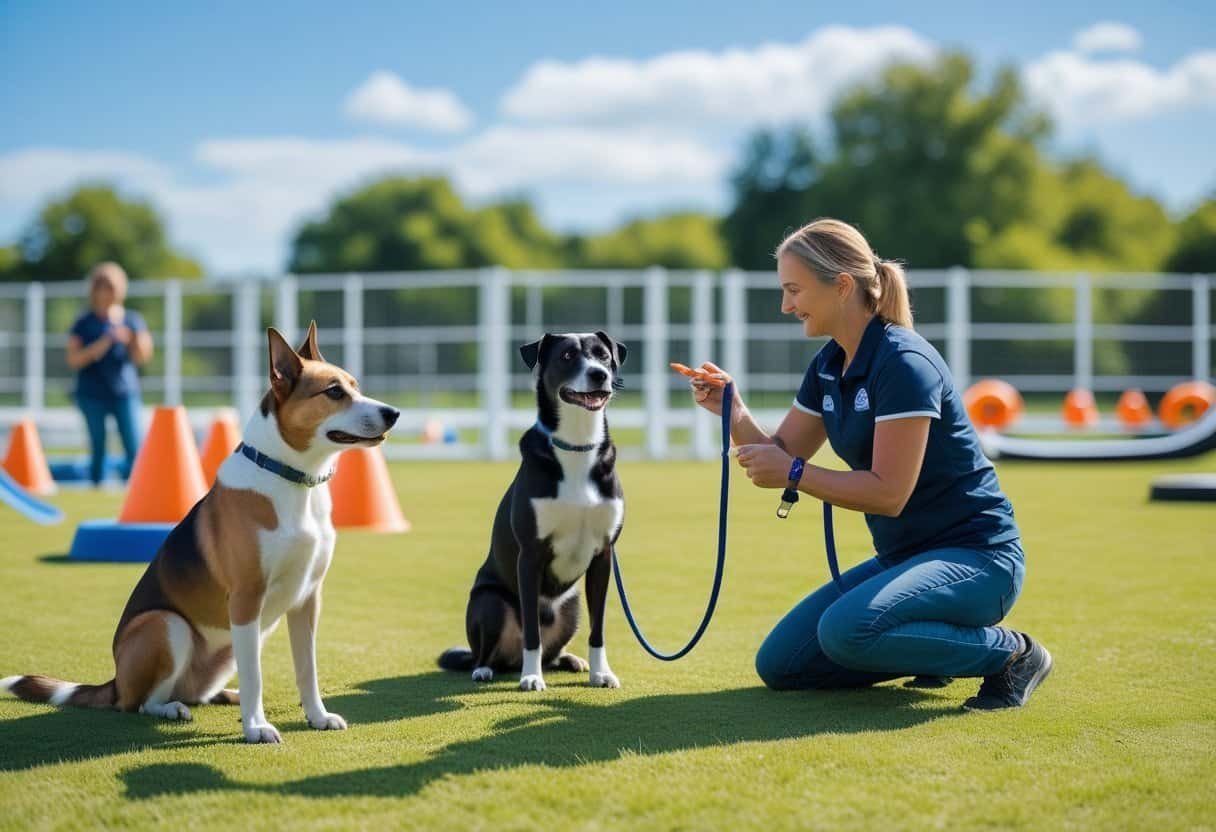
Obedience training helps dogs learn basic commands and good manners. Many owners find classes give both them and their dogs important skills for living together peacefully.
Obedience Training Fundamentals
Obedience training covers commands like sit, stay, come, and heel. It also helps curb unwanted behaviors like jumping or barking too much.
Early training works best, but dogs of any age can learn. A clear routine helps.
Dogs do better with consistent rules, rewards, and corrections. Positive reinforcement—treats or praise—makes learning more fun and helps behaviors stick.
Some dogs need more time to master commands. Staying calm and practicing daily really helps.
Group Obedience Classes
Group obedience classes give dogs a place to learn around other people and pets. These classes usually meet once a week for several weeks.
Each session focuses on specific commands and challenges. Socialization is a big plus.
Dogs get used to other dogs and new environments, which cuts down on fear and anxiety. Group settings also let owners share advice and experiences.
Cost and schedule can vary. It’s smart to pick a class that fits your dog’s age, skill level, and needs.
The Kennel Club and other organizations have listings for local classes.
Working With a Dog Trainer
Some dogs or owners need more personalized help. A professional dog trainer can tailor lessons to your dog’s personality and habits.
Trainers handle everything from basic obedience to more complex issues. Sessions can be at home or a training center.
Private lessons might cost more, but they often lead to quicker progress. If you want dedicated support, Off Leash K9 Training and similar groups offer custom lessons and consultations.
A trainer’s experience can really help build a strong relationship and tackle specific challenges.
Housebreaking, Potty Training, and Crate Training
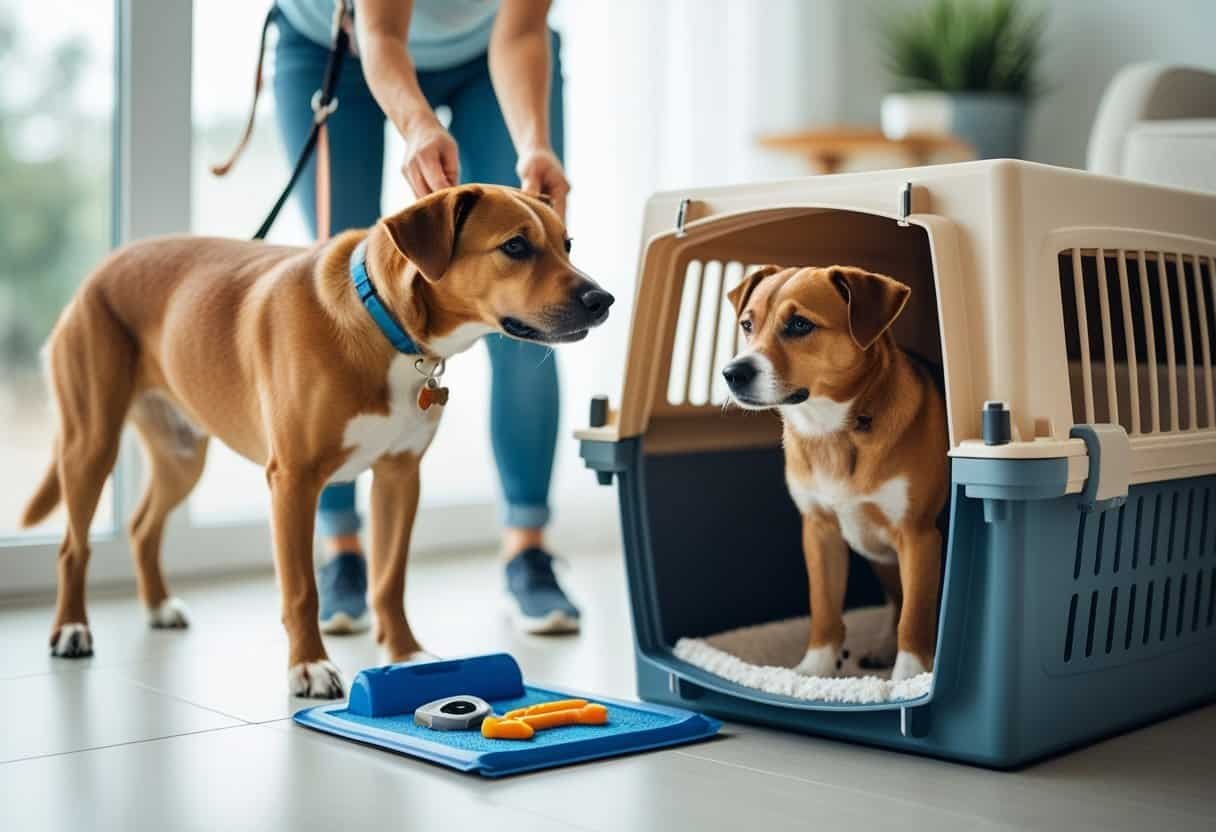
Training a dog to behave at home starts with clear routines. Consistency and patience go a long way.
Housebreaking Strategies
Housebreaking teaches dogs where to go to the bathroom—outdoors or on pads. Most dogs respond well to scheduled feeding and bathroom breaks.
Take your dog out first thing in the morning, after meals, and before bed. This helps form a routine.
Supervise your dog indoors and look for cues like sniffing or circling. That way, you can act fast to prevent accidents.
If an accident happens, clean up the spot well to remove scents that might attract your dog again. Consistency helps dogs feel secure.
Some owners use puppy pads at first, especially if getting outside isn’t always possible. Picking the same spot for bathroom breaks makes things clearer for your dog.
Rewards and praise motivate most dogs to keep up the good work. For more tips, check out Housebreaking 101.
Effective Potty Training
Potty training is about timing and location. A set schedule for meals and walks helps prevent accidents.
Puppies usually need to go out after eating, napping, or playing. Praise and treats right after your dog goes in the right spot make a big difference.
If accidents start happening, you might need to tweak the schedule. Sometimes health issues cause accidents, so talk to your vet if it keeps happening.
Common potty training mistakes include waiting too long between breaks or punishing your dog for accidents. Gentle redirection and quick clean-up work better.
The American Kennel Club has more detailed advice on timelines and tips.
Crate Training Methods
Crate training gives your dog a safe spot, using their instinct not to soil their “den.” The crate should be just big enough for your dog to stand, turn, and lie down.
Let your dog explore the crate by putting in soft bedding and a favorite toy. Introduce the crate slowly.
Start with short periods and lengthen the time as your dog gets comfortable. Don’t leave your dog in the crate too long; a general rule is one hour per month of age during the day.
Let your dog out right after naps, meals, and playtime so they can go outside to potty. Consistency is crucial for crate training to work.
For a step-by-step guide, see how to crate train a puppy.
Leash Training and Socialization
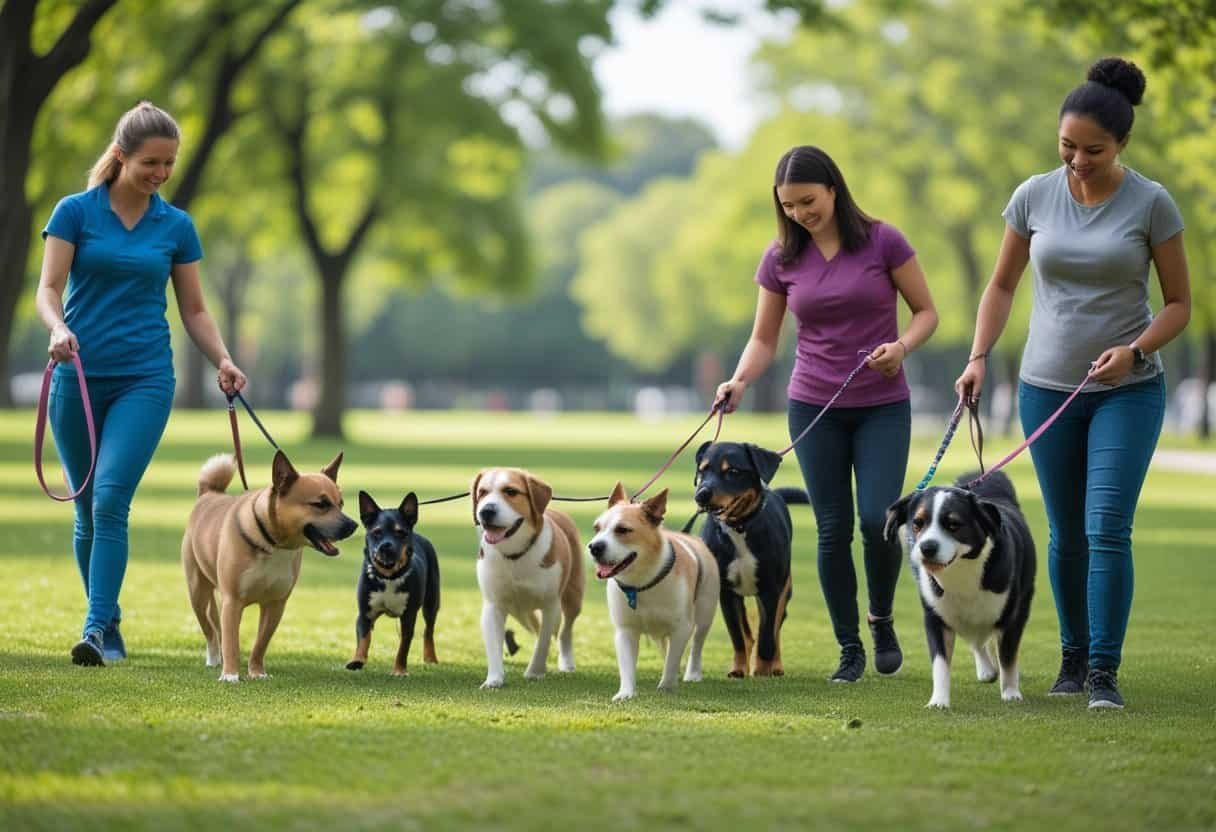
Teaching your dog to walk on a leash and introducing them to new places are key early steps. Practice helps build good habits and makes outings more relaxed.
Teaching Leash Manners
Leash training starts with the right gear. A snug collar or harness and a standard 6-foot leash work best.
Retractable leashes often make pulling worse, so skip those for now. Steady pressure and clear guidance help your dog focus.
Use short, clear cues when walking. Phrases like “let’s go” or “heel” set expectations.
If your dog pulls, stop and wait for slack in the leash before moving forward. That way, your dog learns pulling gets them nowhere.
Rewards reinforce good walking. Treats and praise for walking calmly by your side encourage your dog to do it again.
Keep practice sessions brief and positive. For more techniques, this guide on leash training a dog can help.
Introducing New Environments
New places can be a lot for dogs. Start in quiet areas and work up to busier parks or streets.
Each new spot brings different sights, sounds, and smells, giving your dog a chance to practice manners. Watch for stress signals like panting or pulling and take breaks as needed.
Bringing treats helps redirect your dog if something spooks them. Gradual exposure builds comfort and curiosity instead of fear.
Mixing up the walking route and environment also teaches flexibility. Dogs learn to handle surprises, making them more adaptable.
Taking time to explore new settings strengthens training and helps prevent future problems.
Socialization With Other Dogs
Meeting new dogs on walks is a big part of socialization. Early experiences should be positive and controlled.
Start with short, on-leash greetings in neutral areas. Watch for relaxed body language like wagging tails to see if both dogs feel okay.
Don’t force it if either dog seems nervous. Let them sniff for a few seconds, then walk away together before meeting again.
This keeps things low-stress. Reward calm behavior and don’t sweat a little barking or pulling.
Over time, your dog will learn that meeting others is safe and normal. Good socialization during leash walks leads to better manners and more enjoyable outings.
For more ideas, check out this introduction to leash training and socialization.
Advanced Dog Training and Dog Sports

Advanced dog training goes way beyond the basics. It gives you more control and builds a real sense of teamwork between you and your dog.
A lot of owners get curious about dog sports. These sports push both your dog’s mind and body, and honestly, they’re a lot of fun.
Advanced Commands You Can Teach
Advanced commands let dogs handle trickier tasks and actually help out in daily life. Here are a few you might want to try:
- Leave it: Teaches impulse control—super useful for safety.
- Go to place: The dog learns to settle in a specific spot, which is handy when things get hectic.
- Heel at a distance: Your dog stays close even if you’re not right next to them.
- Retrieve named objects: Fetch specific items like toys, remotes, or even water bottles.
- Open and close doors: Especially helpful for service or assistance dogs.
These skills boost your dog’s confidence. Most trainers stick with positive reinforcement—think treats, praise, and short, focused sessions.
Dogs do best when you’re clear and consistent. Patience really matters here, since advanced stuff takes a while to click. If you want more ideas, check out AKC’s advanced dog training tips.
Exploring Dog Sports
Dog sports are structured activities that get your dog moving, thinking, and socializing. Here are some favorites:
| Sport | Description |
|---|---|
| Agility | Dogs run obstacle courses quickly and accurately |
| Scent Work | Dogs search for hidden scents in various environments |
| Flyball | Relay race involving hurdles and retrieving balls |
| Obedience Trials | Dogs perform set commands with precision under distraction |
| Rally | Dogs complete courses with different obedience exercises |
Dog sports can really deepen your bond. They also help burn off energy and keep boredom at bay.
Pretty much any breed or age can join, though some sports need a certain level of fitness or training. If you want to explore more, Hot Diggity Dog Resort has a great guide.
Building on Training Foundations
Advanced training always starts with solid basics. Most plans include:
- Short, regular practice to keep skills sharp.
- Lots of rewards—treats, praise, whatever your dog loves.
- Gradually adding distractions and making things harder.
- Teaching focus both on and off leash.
Dogs thrive on routine and repetition. If you’re inconsistent, training just doesn’t stick as well.
Working through problem-solving tasks keeps your dog’s mind sharp. It’s also a good way to prevent boredom-related problems. For more on leveling up, Hilldy has tips on advanced dog training.
Understanding Pack Behavior in Training
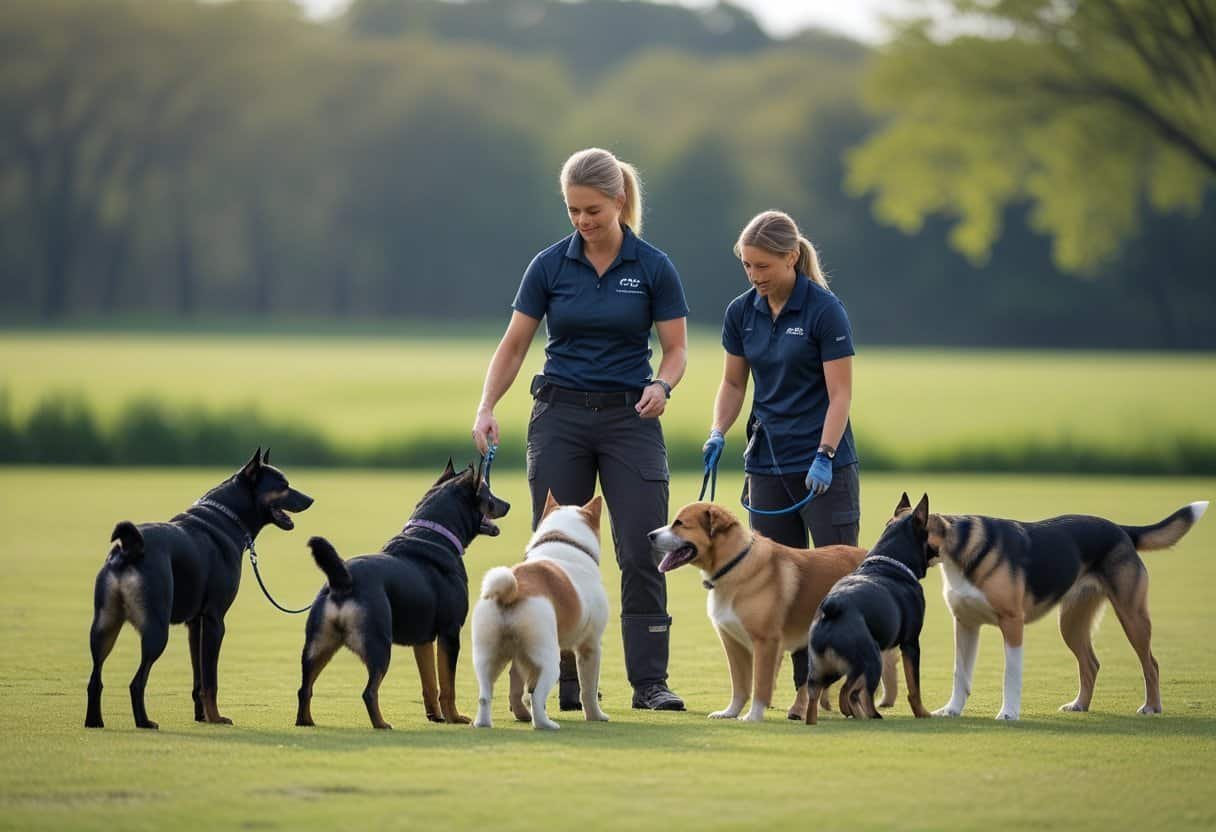
Dogs show social behaviors that come straight from their instincts. Understanding how they interact in groups—and how they see leadership—can make your training sessions way smoother.
Pack Hierarchy and Dog Relationships
When dogs live or work together, they sort out a loose social order. They watch each other’s body language, listen to tone of voice, and pick up on signals from both dogs and people.
This helps them figure out their place—leader, follower, or somewhere in between. Modern research says dogs don’t really challenge people for dominance like wolves do.
Instead, dogs learn from your reactions. When a dog responds to you, it notices what gets a good or bad response and adjusts its behavior.
Here’s a quick look at some common pack behaviors:
| Behavior | Pack Meaning |
|---|---|
| Tail Wagging | Friendly or excited |
| Direct Staring | Attention or challenge |
| Play Bow | Invitation to play |
| Submissive Posture | Respect or caution |
A dog’s “rank” isn’t set in stone. Relationships change based on trust and daily interactions, as explained in this pack mentality article.
Leadership Roles During Training
Leadership in training isn’t about being bossy—it’s about trust and clarity. Good leaders stay calm and consistent.
Dogs look for structure from people who set routines and communicate with clear rules. Simple commands, positive feedback, and fair boundaries help dogs feel safe.
When your dog trusts you, they’re way more likely to listen and feel confident. Effective leaders skip harsh corrections and focus on rewards.
That approach not only improves obedience, but also strengthens your bond. Modern dog training methods say respect and positive experiences work better than force or fear.
Dog Training Techniques and Tools
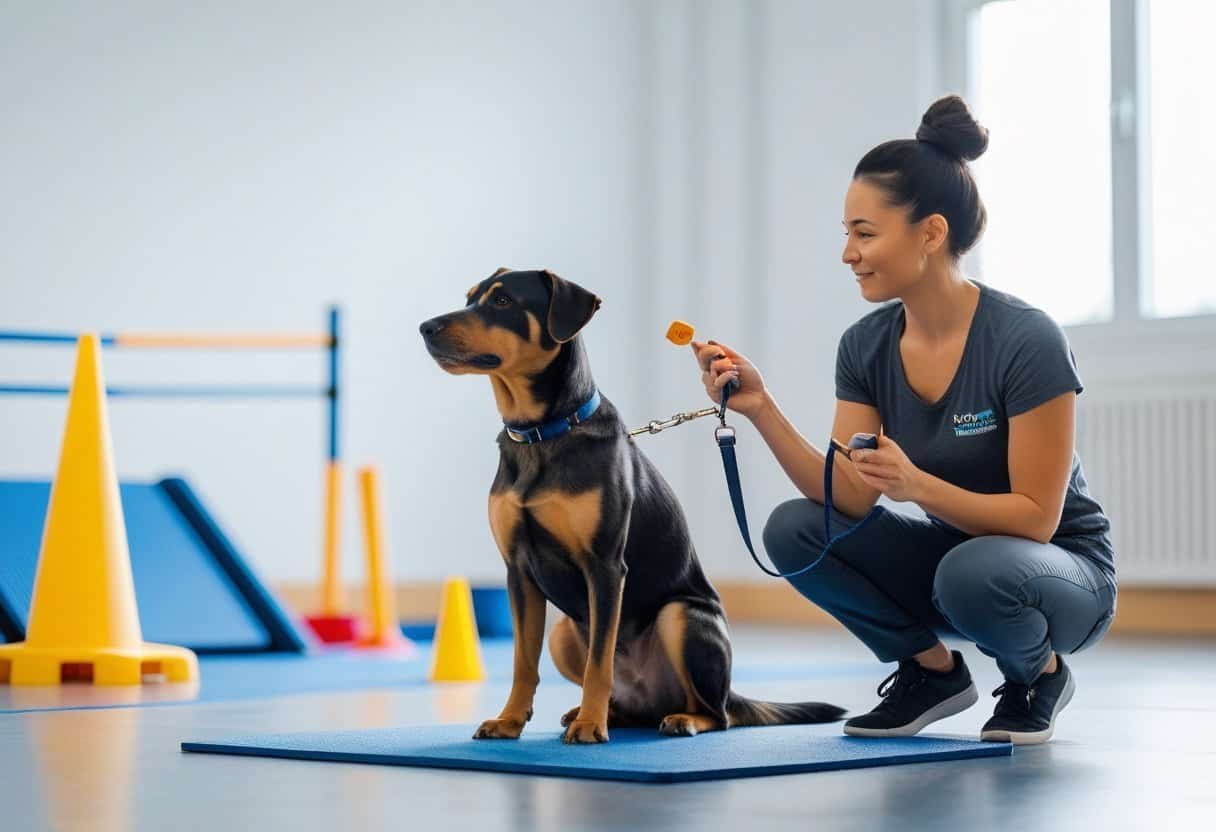
Training dogs means picking methods and equipment that make sense for your situation. There are lots of options out there, from electronic collars to basic harnesses.
Utilizing E-Collars Responsibly
E-collars, or electronic collars, can reinforce commands at a distance. They send a mild signal—like a vibration or beep—to get the dog’s attention.
They’re especially handy for advanced recall or off-leash work. But safety comes first.
If you’re new to e-collars, get professional guidance. The fit should be snug but not tight, and sessions should be short.
Don’t use e-collars for punishment or overdo it. They work best as part of a reward-based approach.
Most trainers agree: e-collars should never cause pain or fear. Want more info? Here’s a solid guide on training techniques.
Choosing the Right Training Tools
Picking the right training gear depends on your dog and your goals. Useful tools include harnesses, leashes, crates, treat pouches, and clickers.
Harnesses help with dogs who pull. Crates give dogs a safe space to learn boundaries.
Treats and clickers make it easier to reinforce good behavior. Collars and leashes are basics, but pick the right kind for your dog.
Training gates can set boundaries inside. If you want to know more about different tools, check out these dog training tools.
Look for quality and safety. Cheap or poorly made gear can cause problems.
Consequences and Reinforcement in Training

Trainers use different methods to teach good behaviors and stop unwanted actions. Each method changes behavior by adding or taking away something after the dog acts.
Positive Punishment and Negative Punishment
Positive punishment means you add something unpleasant after your dog does something you don’t want. If your dog jumps on a guest and you make a loud noise, that noise is meant to stop the jumping.
The key is timing—it has to be immediate and strong enough to matter, but never scary or harmful.
Negative punishment means you take away something your dog likes after bad behavior. If a puppy nips during play, you stop playing and walk away.
That teaches the puppy that rough play makes the fun end. Again, timing is everything—do it right after the unwanted behavior.
Many trainers prefer negative punishment because it’s clear and gentle. It avoids the risk of fear or aggression that can come from harsh punishment.
Both methods can work if you use them carefully and stay consistent. For a deeper dive, check out this operant conditioning article.
Negative Reinforcement
Negative reinforcement means you remove something unpleasant when your dog does the right thing. It’s not the same as punishment.
For example, you apply gentle leash pressure, and as soon as the dog stops pulling, you release it. That teaches loose-leash walking.
This method works because the dog learns that doing the right thing makes the discomfort go away. Timing matters—release the pressure exactly when your dog gets it right.
Some trainers use negative reinforcement with rewards, but it should be done thoughtfully. If you’re not careful, it can confuse or stress your dog.
Always make sure your dog knows how to avoid or escape the pressure. Here’s a guide on negative reinforcement if you want more details.
Frequently Asked Questions
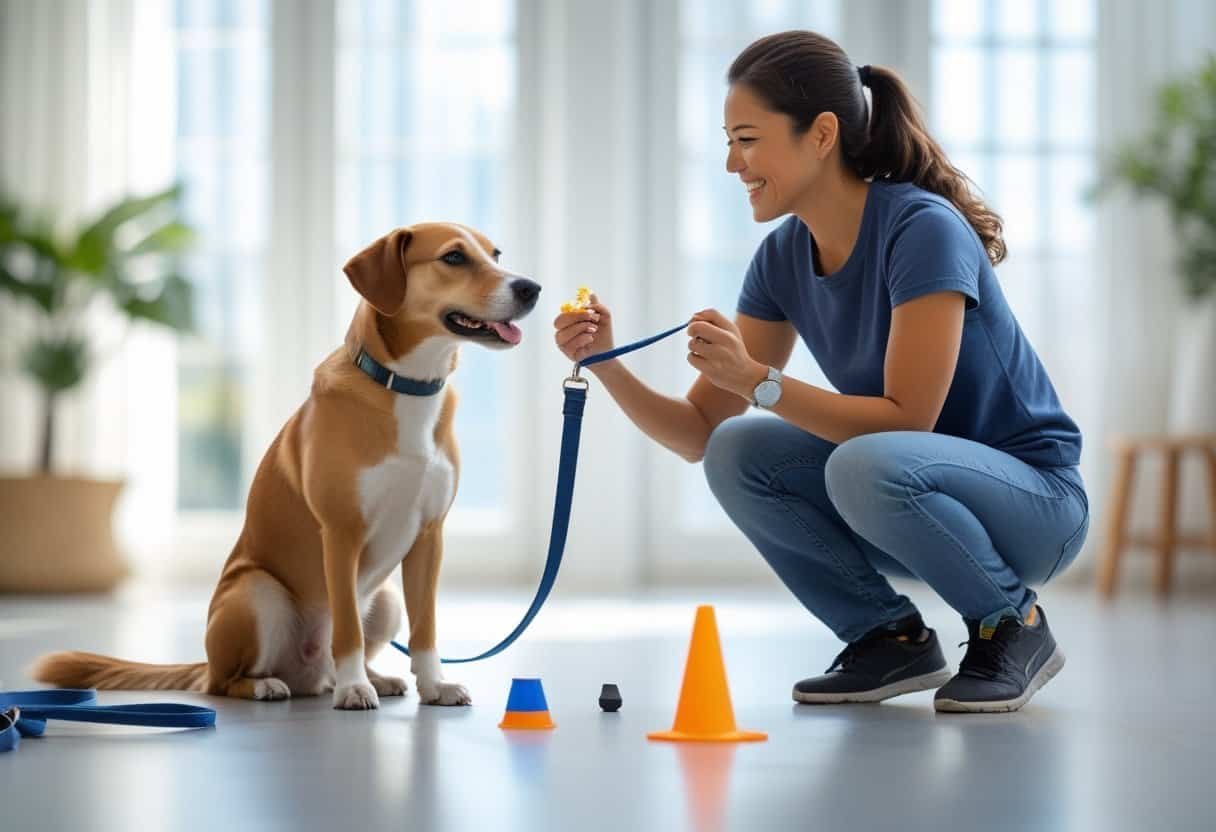
Dog training brings up questions about cost, picking the right breed, choosing good facilities, setting schedules, and knowing the differences between training programs.
Owners also need to know about rules like the 3-3-3 method to help dogs settle in.
What are the typical costs associated with professional dog training?
Private sessions usually run $50 to $125 per hour. Group classes are cheaper, maybe $30 to $80 per session.
Board-and-train programs cost more—sometimes $500 to $1,200 per week. Prices depend on where you live, the trainer’s experience, your dog’s needs, and the type of training.
How do I choose the best breed for obedience and training purposes?
Breeds like Border Collies, Poodles, German Shepherds, and Golden Retrievers have a reputation for trainability. They usually pick up commands fast and enjoy training.
Pick a breed that fits your lifestyle and energy level for the best training experience.
What should I look for in a dog training facility?
Look for places that use positive reinforcement and have certified trainers. Cleanliness, small class sizes, and clear policies are important.
The staff should answer your questions and make you and your dog feel welcome. Reviews and recommendations from people you trust can help you decide.
Can you recommend a dog training schedule for new pet owners?
Start with short sessions—5 to 10 minutes, two or three times a day. Focus on basics like sit, stay, and come.
Be consistent with your cues. As your dog improves, add distractions and practice in different places.
For more tips, check out these common dog training questions.
What is the 3-3-3 rule for dog training and how does it apply?
The 3-3-3 rule helps you understand how dogs adjust. During the first 3 days, most dogs feel stressed and unsure.
By 3 weeks, they start to settle and learn the routine. After about 3 months, they usually feel at home and show their real personalities.
This rule helps set realistic expectations for your dog’s transition.
How do Petco and PetSmart’s dog training programs compare?
Petco and PetSmart both run group and private dog training classes. They stick to positive reinforcement and cover pretty similar material.
The real differences? You’ll probably notice them in the trainers’ experience, class sizes, and how many locations are nearby. If you’re thinking about signing up, it’s smart to swing by each store, maybe catch a class in action, and chat with the trainers about their approach.
That way, you can get a feel for what fits you—and your dog—best.

